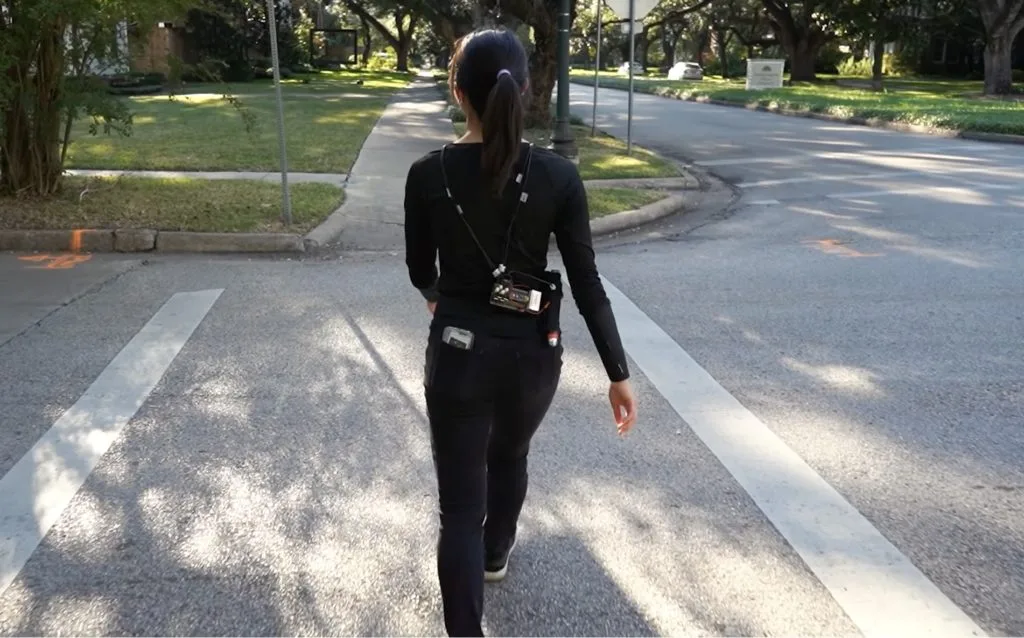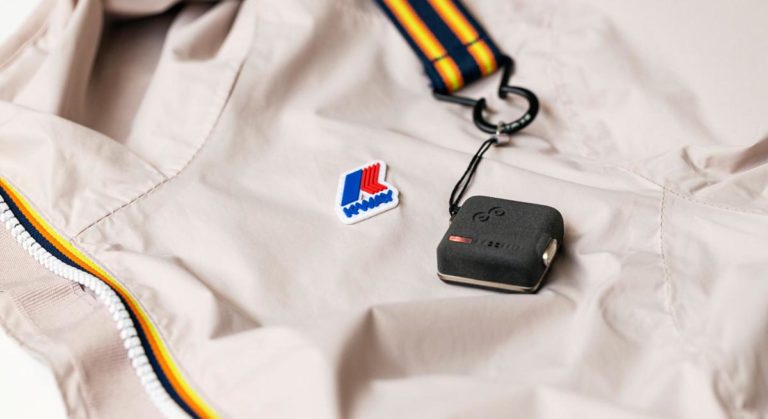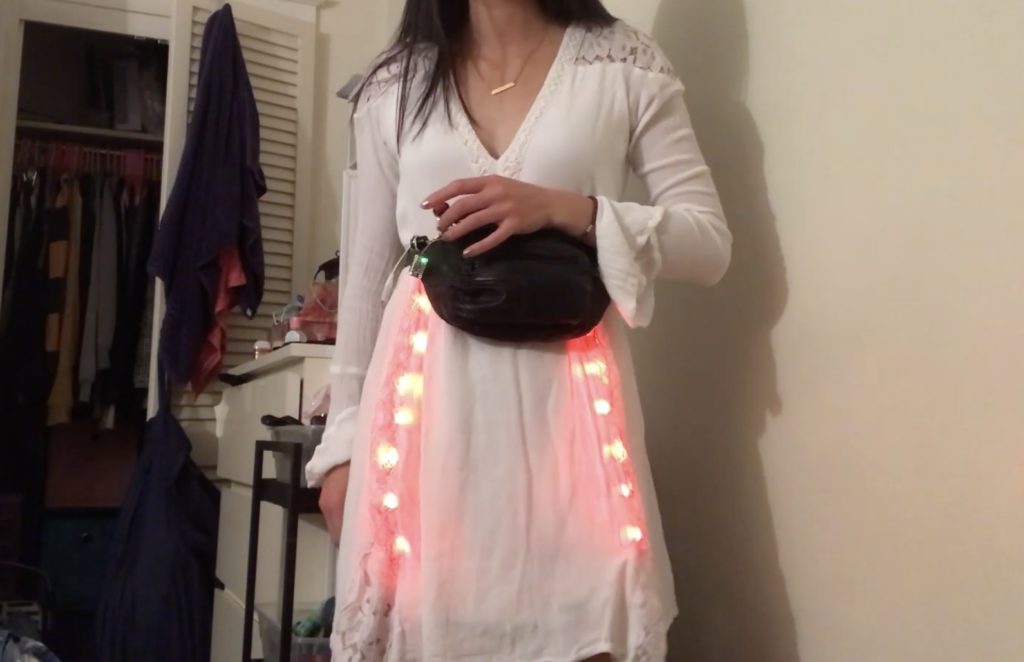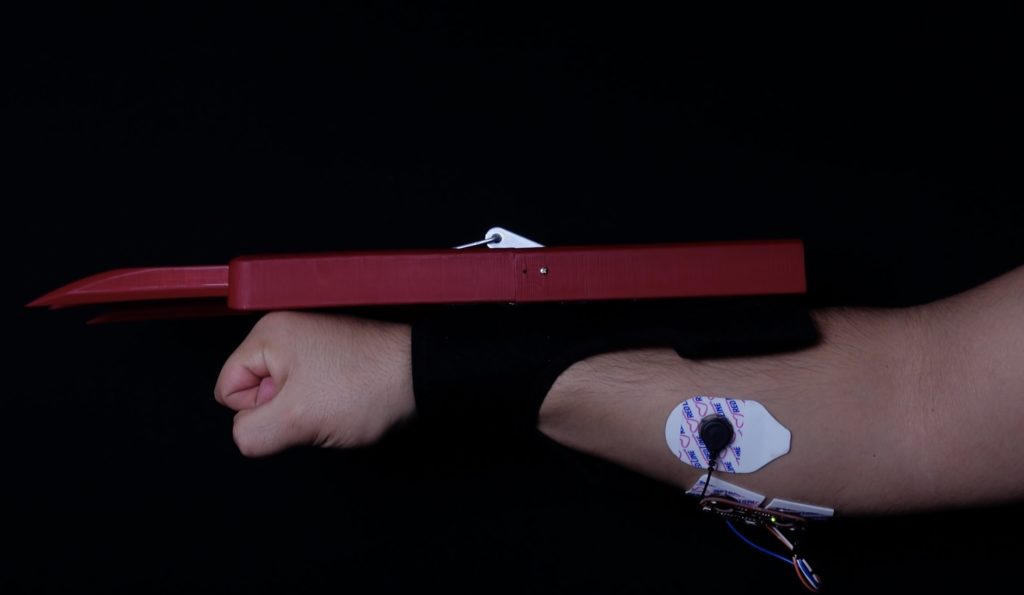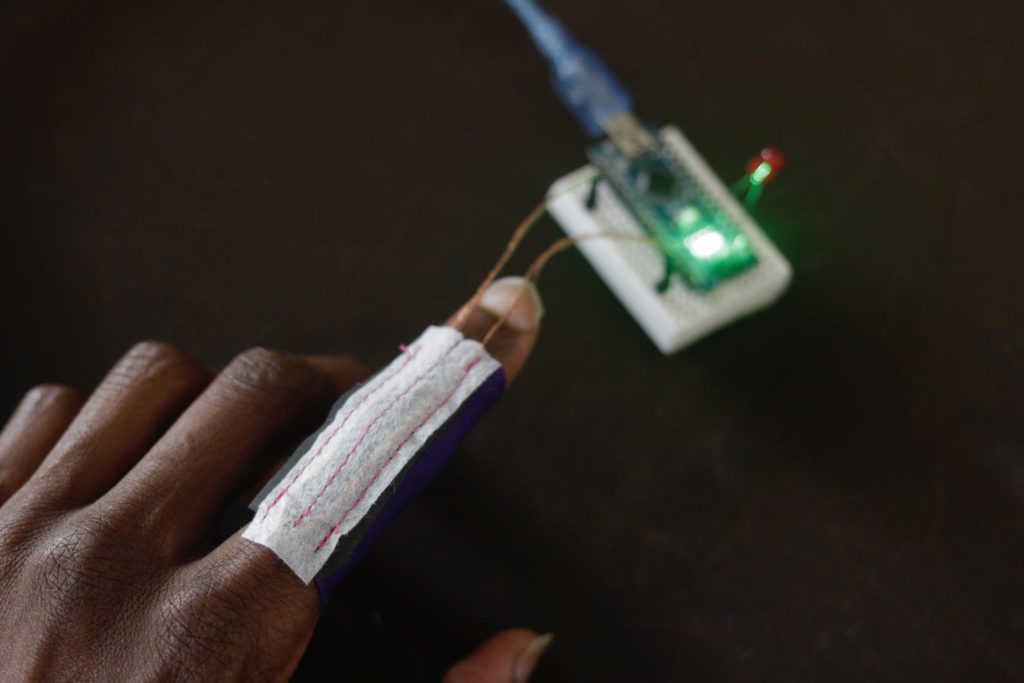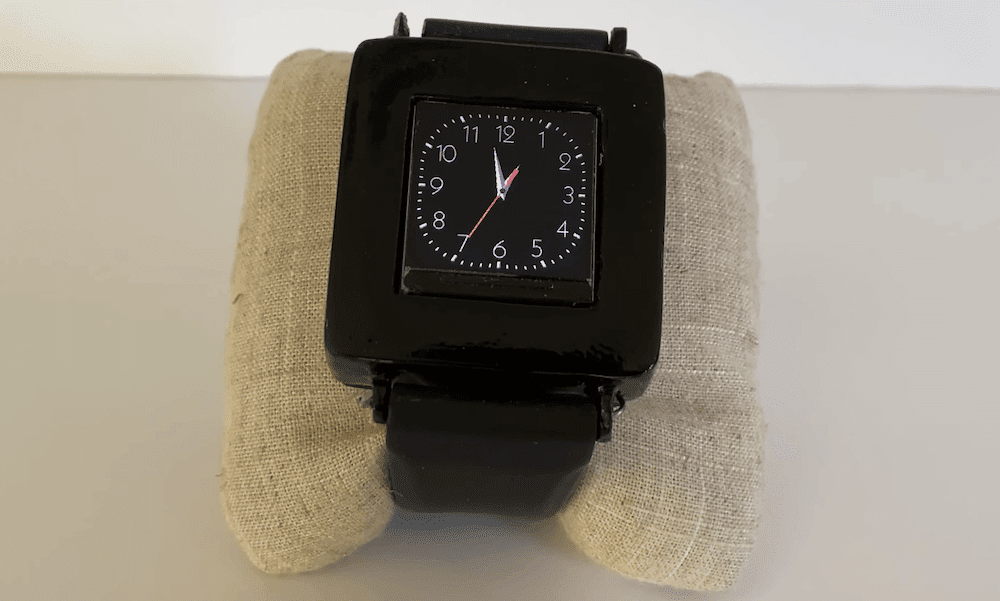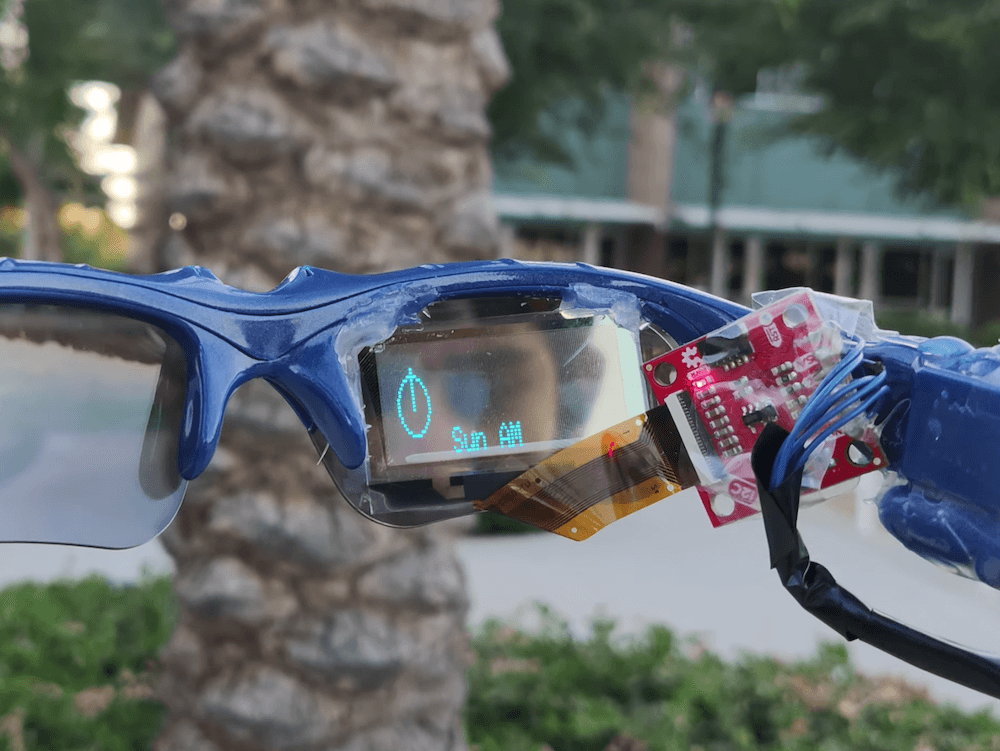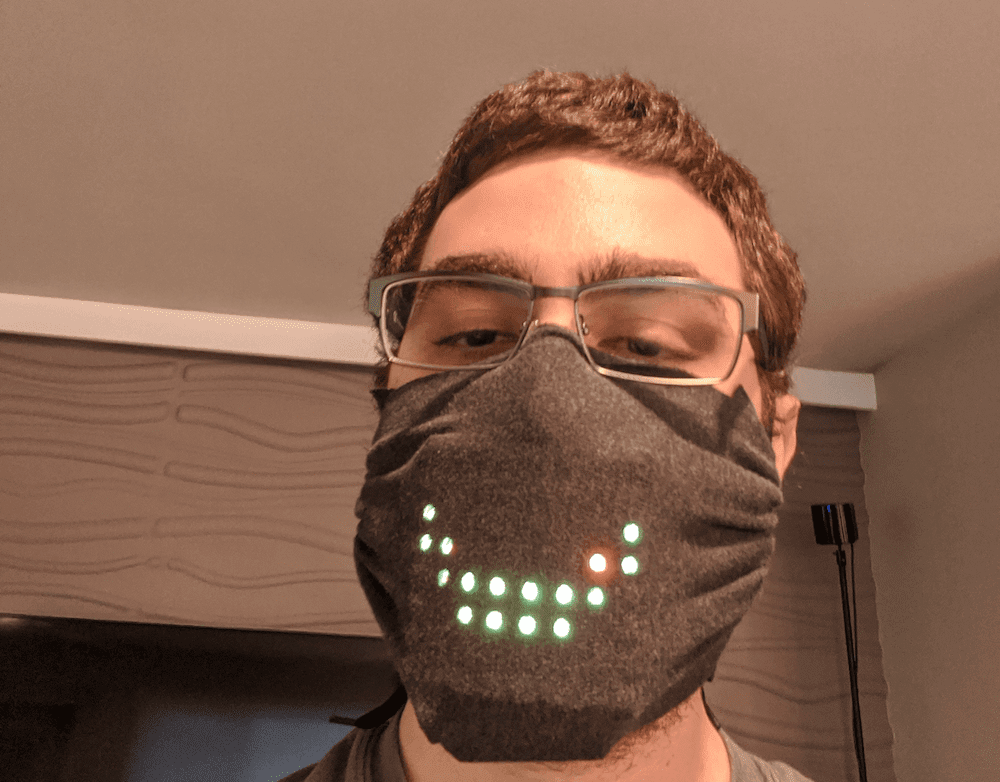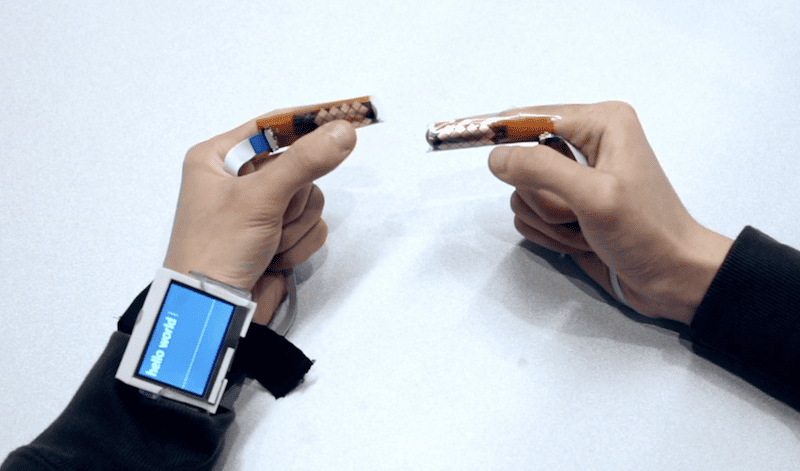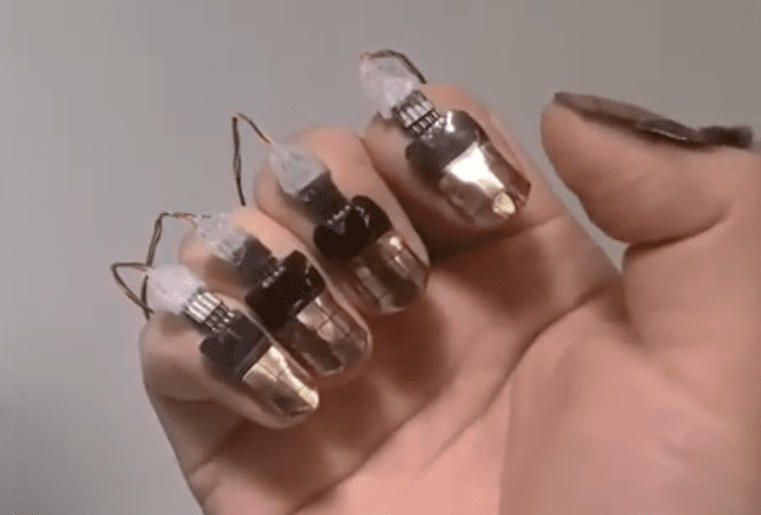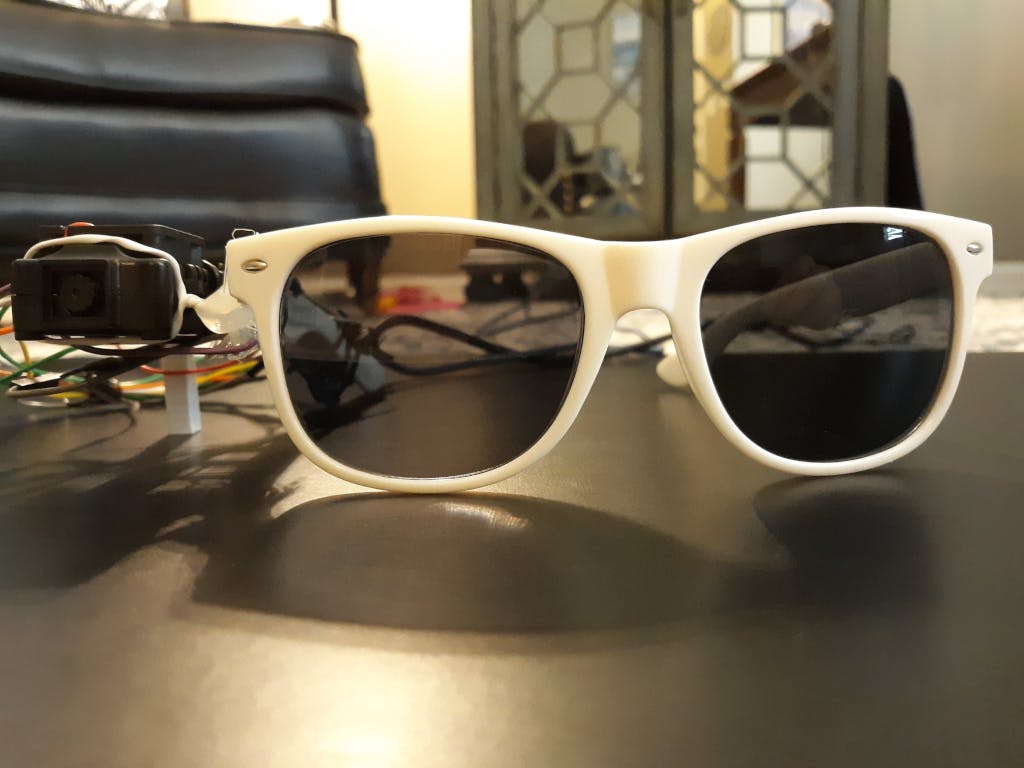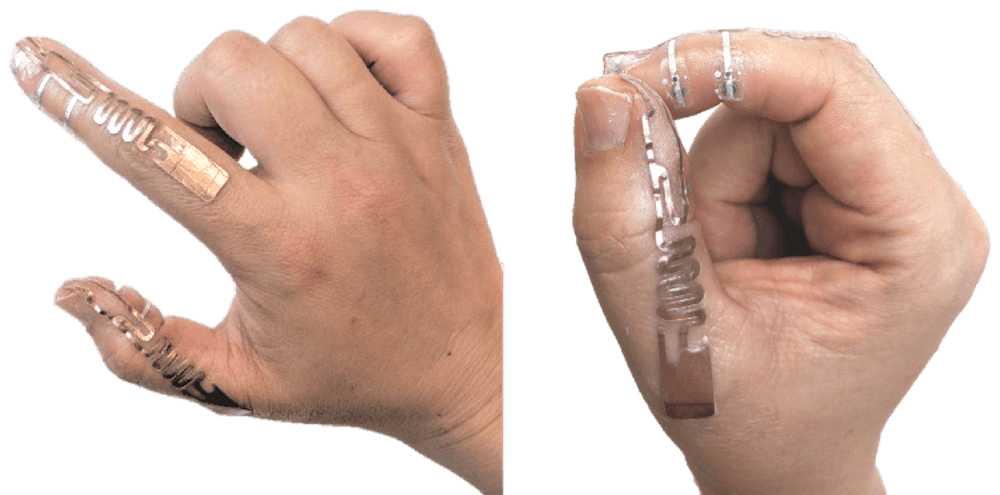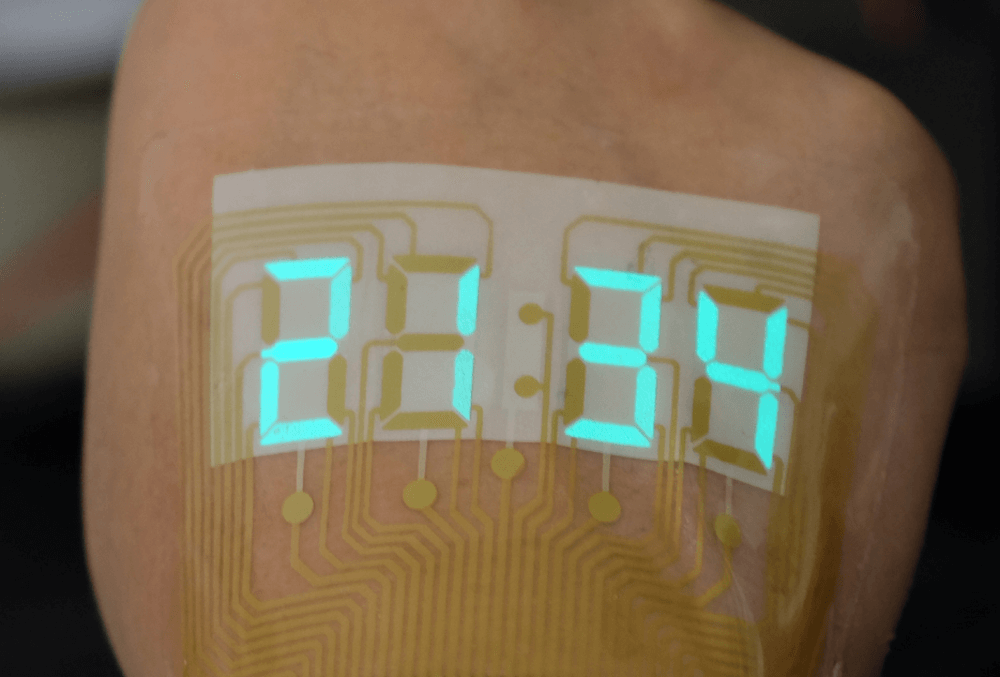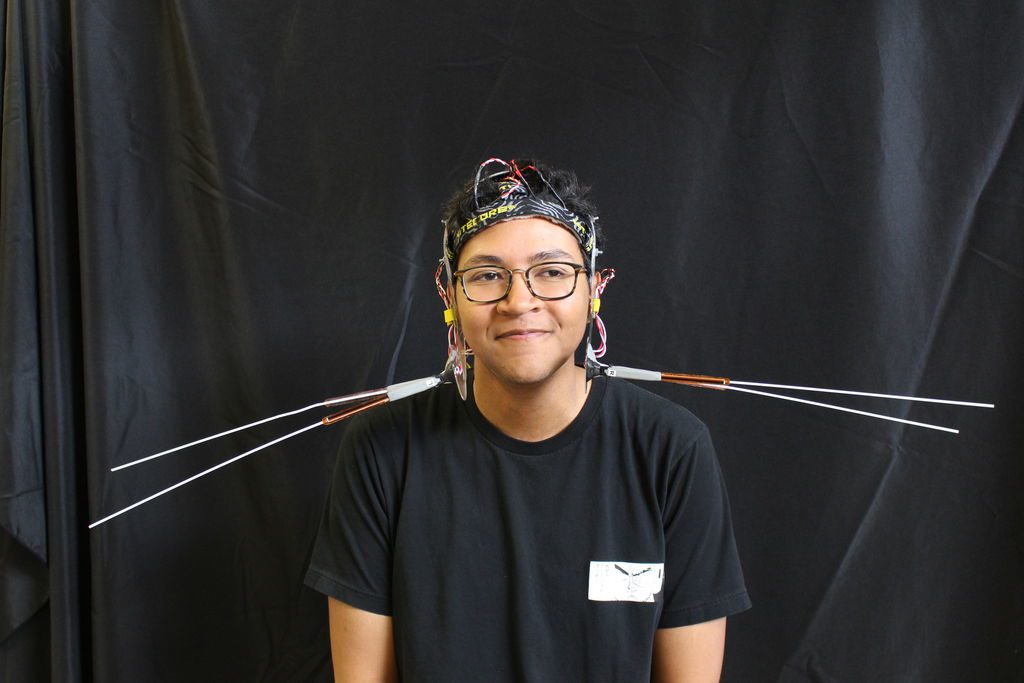Schlagwort: Wearable Computing
-

This wearable device uses air to provide directions
Reading Time: 2 minutesMost people today rely on technology to navigate through the world. That is practical thanks to the reliability of modern GPS. But receiving directions can be difficult for people with certain disabilities. People who are blind, for instance, cannot look at a map on a smartphone. People with missing limbs may not…
-

Arduino and K-Way, with the support of Edge Impulse, team up for a new idea of smart clothing
Reading Time: 2 minutesImagine the possibilities generated by integrating advanced AI and powerful sensors in to one of the most iconic outdoors jackets with a heritage that’s more than 50 years old. You could start sensing and interacting with the surroundings like never before. This is what we created here at Arduino: enclosing the Nicla…
-

This maker designed an interactive LED-lit dress inspired by Katniss Everdeen’s
Reading Time: 2 minutesThis maker designed an interactive LED-lit dress inspired by Katniss Everdeen’s Arduino Team — December 16th, 2021 Inspired by Katniss Everdeen’s burning dress from the Hunger Games series, Cindy Li set out to create her own version that uses fabric-attached LEDs to both simulate fire when movement is detected and illuminate in other ways when a certain…
-

Trakcore is a Nano 33 IoT-based posture correction device
Reading Time: 2 minutesArduino Team — August 31st, 2021 Poor posture is an epidemic for nearly anyone who spends an excessive amount of time sitting, and this can lead to a whole host of problems later in life. Some of these might include back pain, limited range of motion, and muscle tightness. Recognizing that his…
-

Giving Google Glass a run for its money
Reading Time: 2 minutesArduino Team — August 27th, 2021 Google rarely enters the hardware world and when they do, they receive a mixed reception. The smart glasses were very controversial when they first launched, due to privacy and fashion concerns. But the idea was a good one: a wearable computer that gave you a heads-up…
-

This wearable device sends an alert whenever it detects a fall
Reading Time: 2 minutesArduino Team — July 2nd, 2021 A dangerous fall can happen to anyone, but they are particularly dangerous among the elderly as that demographic might not have effective ways to get help when needed. Rather than having to purchase an expensive device that costs up to $100 per month to use, Nathaniel F. on…
-

Use your smartphone to control Wilson the IoT hat
Reading Time: < 1 minuteArduino Team — June 21st, 2021 Wearable displays are nothing new, but many of them lack that all-important “fun” element. That’s why OlivierZ over on Instructables created Wilson the IoT hat. The smart hat contains a large 232mm by 22mm flexible LED strip on its front that prominently shows rainbow text across a 71×7 LED…
-

DiaFit is a customizable glucose monitor system based on the Nano 33 IoT
Reading Time: 2 minutesArduino Team — June 2nd, 2021 While diabetes is still very much a serious disease, medical advancements over the past few decades make it much easier to live with. Wearable glucose monitors in particular provide a convenient way for people to keep an eye on their blood sugar, so they can get…
-

Channel your inner Wolverine with these 3D-printed, muscle-controlled bionic claws
Reading Time: < 1 minuteArduino Team — May 1st, 2021 In the fictional Marvel Universe, Wolverine has sets of claws that pop out of his hands as if they were natural parts of his body. While a seemingly fantastic concept, myoelectric sensors are able to pick up on muscle movements in order to illicit a…
-

Finger Bend is a DIY textile flex sensor
Reading Time: < 1 minuteArduino Team — April 13th, 2021 You can turn on an LED with a button or switch, but what about by bending your finger? Willpower Studios’ textile flex sensor, dubbed Finger Bend, presents a method for such an interface. Inside the custom sleeve is a piece of piezoresistive stretch fabric, which…
-

This futuristic-looking device actively discourages you from touching your face
Reading Time: 2 minutesArduino Team — April 2nd, 2021 For a variety of reasons, including potential virus transmission, it’s a bad idea to touch your face too often. If you need a little “help” to break this habit, then you might consider the STOP Face Touching Device by DesignMaker. The system takes the form of…
-

This DIY watch works but for only a limited amount of time
Reading Time: < 1 minuteThis DIY watch works but for only a limited amount of time Arduino Team — December 5th, 2020 The Nano is one of our smallest boards, and as YouTuber Craft Channel has proven, it’s tiny enough to act as the brains of a wristwatch. This DIY wearable device features a nicely…
-

Student designs his own pair of smart glasses with a transparent OLED display and Arduino Nano Every
Reading Time: < 1 minuteStudent designs his own pair of smart glasses with a transparent OLED display and Arduino Nano Every Arduino Team — July 24th, 2020 For his school science fair, Mars Kapadia decided to take things up a notch and create his own pair of smart glasses. The wearable device, which went on to…
-

This Arduino-powered LED matrix mask responds to your voice
Reading Time: < 1 minuteThis Arduino-powered LED matrix mask responds to your voice Arduino Team — June 2nd, 2020 When wearing a face mask nowadays, you can’t show expressions in the same ways that we’re all accustomed to. As a possible solution to this problem, programmer Tyler Glaiel decided to create a custom covering, with…
-

BiTipText enables text entry across two index finger-worn keyboards
Reading Time: < 1 minuteBiTipText enables text entry across two index finger-worn keyboards Arduino Team — May 5th, 2020 Typing with your thumbs on a smartphone has become an everyday activity for many, but what if you could enter text by simply tapping on your index fingers? With BiTipText, that may soon be a reality. …
-

Nailz turns your fingernails into wearable input system for smart devices
Reading Time: 2 minutesNailz turns your fingernails into wearable input system for smart devices Arduino Team — May 4th, 2020 Researchers at UNIST in South Korea have developed a novel system for smart device input using touch-sensitive fingernails, called Nailz. As noted in the team’s paper, fingernails have long served as a site for body…
-

Give your memory a boost with Newrons
Reading Time: 2 minutesGive your memory a boost with Newrons Arduino Team — January 28th, 2020 When you get a notification on your smartphone, more often than not, you’re doing something more pressing. You then silence the alarm, and perhaps forget about it. Nick Bild, however, has created a pair of smart glasses that take…
-

2D-RFID input at the tip of your fingers
Reading Time: 2 minutes2D-RFID input at the tip of your fingers Arduino Team — December 2nd, 2019 Researchers at the University of Waterloo in Canada have developed a novel hand-based input technique called Tip-Tap that amazingly requires no batteries. The wearable device uses a series of three custom RFID tags on both the thumb and…
-

Check your run time on a stretchable electroluminescent stopwatch ‘tattoo’
Reading Time: < 1 minuteCheck your run time on a stretchable electroluminescent stopwatch ‘tattoo’ Arduino Team — November 4th, 2019 A stretchable light-emitting device becomes an epidermal stopwatch.Image: Adapted from ACS Materials Letters 2019 Imagine if your watch wasn’t mounted on your wrist, but was instead integrated into a sort of temporary tattoo on the back…
-

Check your run time on a stretchable electroluminescent stopwatch ‘tattoo’
Reading Time: < 1 minuteCheck your run time on a stretchable electroluminescent stopwatch ‘tattoo’ Arduino Team — November 4th, 2019 A stretchable light-emitting device becomes an epidermal stopwatch.Image: Adapted from ACS Materials Letters 2019 Imagine if your watch wasn’t mounted on your wrist, but was instead integrated into a sort of temporary tattoo on the back…
-

Experience the world like a cat with this whisker-style sensory extension
Reading Time: 2 minutesExperience the world like a cat with this whisker-style sensory extension Arduino Team — July 2nd, 2019 Imagine if you had whiskers. Obviously, this would make you something of an oddity in today’s society. On the other hand, you’d be able to sense nearby objects via the transmission of force through these…
-

Experience the world like a cat with this whisker-style sensory extension
Reading Time: 2 minutesExperience the world like a cat with this whisker-style sensory extension Arduino Team — July 2nd, 2019 Imagine if you had whiskers. Obviously, this would make you something of an oddity in today’s society. On the other hand, you’d be able to sense nearby objects via the transmission of force through these…
